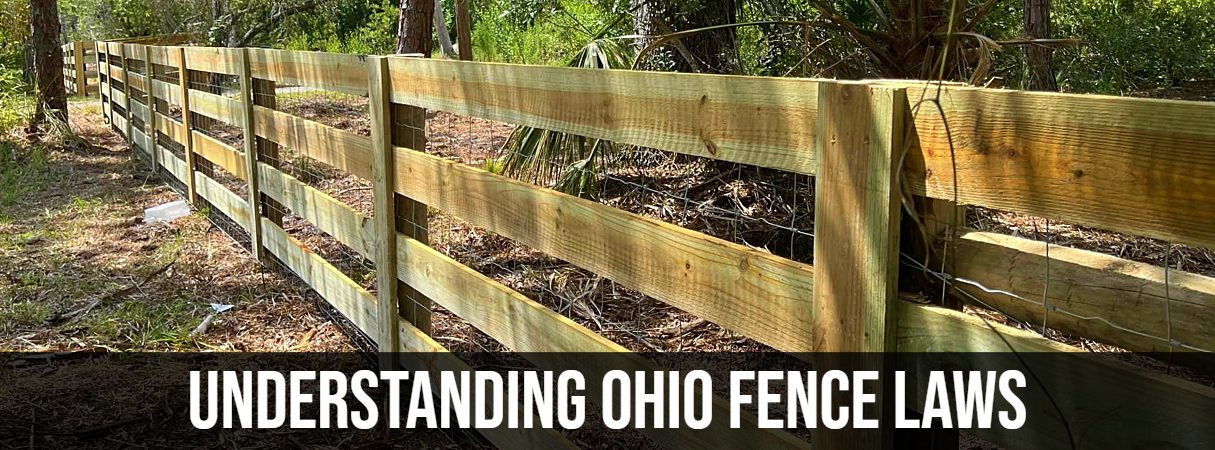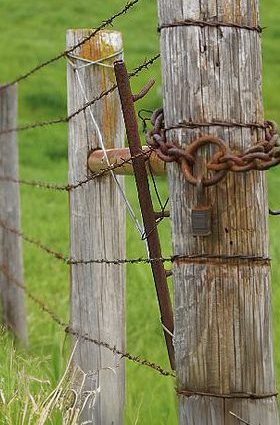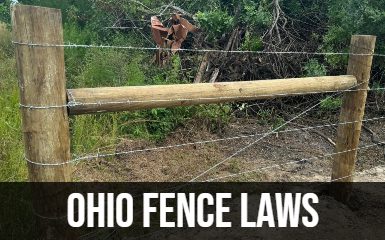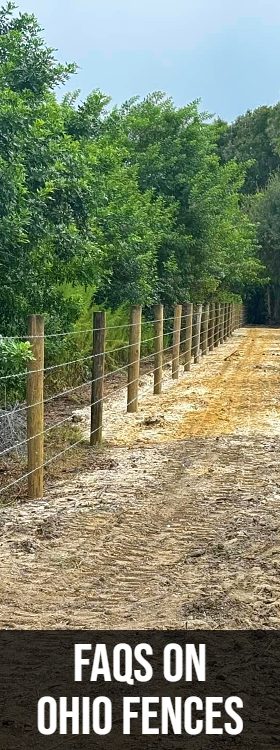
Overview of Ohio Fence Laws
So, you’re thinking about putting up a fence in Ohio, huh? Whether you’re looking to keep the neighbors from wandering into your yard or just add a little privacy, there are a few things you’ll want to know before you start digging post holes. Ohio fence laws are here to guide you—or, depending on your perspective, make you jump through a few hoops. Either way, we’re here to break it all down, so you don’t end up on the wrong side of the law (or your neighbor’s lawn).
In Ohio, fence laws aren’t just some arbitrary rules; they’re designed to keep things neighborly while ensuring that property boundaries are respected. Basically, they spell out the dos and don’ts of fence building so that everyone stays happy (or at least less grumpy). From where you can put a fence to how tall it can be, Ohio’s laws are designed to make sure no one gets into a fence feud.

Ohio Property Line Fencing Regulations
Now, let’s talk property lines. In Ohio, the golden rule is pretty simple: if you’re building a fence, make sure it’s on your side of the property line. It sounds obvious, but nothing stirs up a good ol’ neighborly dispute faster than a fence creeping into someone else’s yard. If you’re unsure where your property line is, do yourself a favor—grab a surveyor or check those old dusty deeds. No one wants to end up on a first-name basis with the local zoning board over a few inches of misplaced picket fence.
And hey, if you and your neighbor are cool about it, you can agree to share a fence along the property line. Just be sure you’ve got that agreement in writing, because verbal deals tend to get foggy—especially when maintenance or repairs come up later.
Who Pays for a Shared Fence in Ohio?
Speaking of shared fences, let’s clear this up: if the fence is smack dab on the property line, who’s footing the bill? In Ohio, it’s generally expected that both parties split the cost. Sounds fair, right? But if your neighbor isn’t on board with chipping in, you might be stuck covering the whole cost yourself. Just another reason to get these agreements sorted out early on. Because let’s face it, nothing says “awkward” like mailing your neighbor a bill for half a fence they didn’t ask for.
Fence Materials: What’s Allowed in Ohio?
Now let’s talk materials. In Ohio, you’ve got a decent amount of flexibility here, but there are a few restrictions. Chain link, wood, vinyl—those are all pretty standard and good to go. But if you’re thinking about barbed wire or electric fences, you might want to pump the brakes. These types of fences are typically a no-go in residential areas unless you have a compelling agricultural reason (hello, farm owners).
Otherwise, most folks are best off sticking with the classics. And if you’re looking for something low maintenance? Vinyl’s a solid choice—it doesn’t need much love and won’t rot like wood.
Ohio Fence Height Restrictions
If you’re dreaming of a fence that towers over your yard like a fortress, Ohio’s got some rules for you. Most local ordinances in Ohio limit residential fences to six feet in the backyard and four feet in the front yard. It’s a practical way to maintain sightlines and avoid turning neighborhoods into walled-off compounds.
Of course, this can vary depending on where you live, so it’s always a good idea to check with your city or county before you start building. And for those looking to build a privacy fence, don’t worry—you can still get that extra bit of seclusion without feeling like you’re constructing the Great Wall of Ohio.

Ohio’s “Right-Hand Rule” for Fences
Here’s a fun one for you: Ohio has what’s known as the “right-hand rule” for fences. Basically, if you’re building a fence, the nice, finished side should face your neighbor’s property, while the posts and rails stay on your side. It’s a little trick to keep things looking tidy and avoid any passive-aggressive “why is your fence so ugly from my yard?” conversations.
So, when you’re putting up that fence, make sure the good side’s facing out—you’ll keep your neighbor happy, and it’ll look great from the street.
What Happens If Your Neighbor Builds a Fence on Your Property?
Uh-oh. Your neighbor’s gone rogue and built a fence on your land. What now? First, take a breath. This doesn’t have to turn into an all-out fence war. In Ohio, you have legal rights if someone builds on your property, and the first step is always to have a calm conversation with your neighbor. They might not even realize they’ve encroached on your land.
If the friendly approach doesn’t work, you can involve a surveyor to officially mark the property lines. From there, you’ve got legal options, including moving the fence or, if necessary, pursuing legal action to reclaim your land. But hopefully, a quick chat over the fence line will solve things before it gets to that point.
Do You Need a Permit to Build a Fence in Ohio?
Permits. They’re the paperwork nobody likes, but they’re often necessary. In many parts of Ohio, you’ll need a permit to build a fence, especially if it’s over a certain height or you live in an area with a homeowner’s association (HOA). Every city is different, so before you start digging, it’s worth a quick call to your local zoning office to see what’s required.
For HOAs, the rules can be even stricter—sometimes down to the color of the fence—so double-check their regulations if you want to avoid a “cease and desist” letter in your mailbox.
Ohio Agricultural Fence Laws
For our rural friends, Ohio’s agricultural fence laws are a bit different. If you’re dealing with livestock or large open land, you’ve got more options when it comes to fencing materials, like electric or barbed wire, which aren’t allowed in residential areas. These types of fences help keep animals in (and, in some cases, pesky critters out).
Just make sure to follow any specific county guidelines about height and distance from roads, especially if your fence could pose a danger to passing traffic.
Final Thoughts on Ohio Fence Laws
Building a fence might seem like a simple task, but as we’ve seen, Ohio’s fence laws are anything but. Whether you’re aiming for privacy, a clear boundary, or just want to keep the family dog from wandering off, it’s crucial to know the ins and outs of local regulations. By understanding where your property line lies, who’s responsible for shared fences, and what’s allowed in terms of height and materials, you’ll avoid potential headaches down the road.
At the end of the day, a well-planned fence not only boosts your property’s appeal but also helps keep neighborly relations on good terms (which might be worth more than the fence itself!). So before you grab that post-hole digger, make sure you’ve done your homework, talked to your neighbor, and checked with your local zoning office.
With the right prep, you’ll be able to build a fence that stands strong—both in the yard and in the eyes of Ohio law.
Frequently Asked Questions (FAQs)

1. Do I Need a Permit to Build a Fence in Ohio?
In most areas of Ohio, a permit is required if your fence exceeds certain height limits, typically 6 feet in the backyard and 4 feet in the front yard. Always check with your local zoning office to see if a permit is needed based on your specific location.
2. Who Pays for a Shared Fence Between Neighbors in Ohio?
Generally, in Ohio, the cost of a shared fence should be split between neighbors if the fence is built directly on the property line. However, if one party refuses to contribute, the other may end up covering the entire cost.
3. What Are the Height Restrictions for Fences in Ohio?
Ohio’s typical height restrictions are 6 feet for backyard fences and 4 feet for front yard fences, though this can vary depending on local ordinances. Be sure to confirm the specific rules in your city or county before building.
4. Can I Build a Fence Directly on the Property Line in Ohio?
Yes, you can build a fence on the property line as long as both neighbors agree. However, if you’re building it without a shared agreement, it’s best to place it within your own property boundaries to avoid disputes.
5. What Materials Are Allowed for Residential Fences in Ohio?
Common materials like wood, chain link, and vinyl are typically allowed for residential fences in Ohio. However, barbed wire and electric fences are generally restricted to agricultural use and are prohibited in most residential areas.